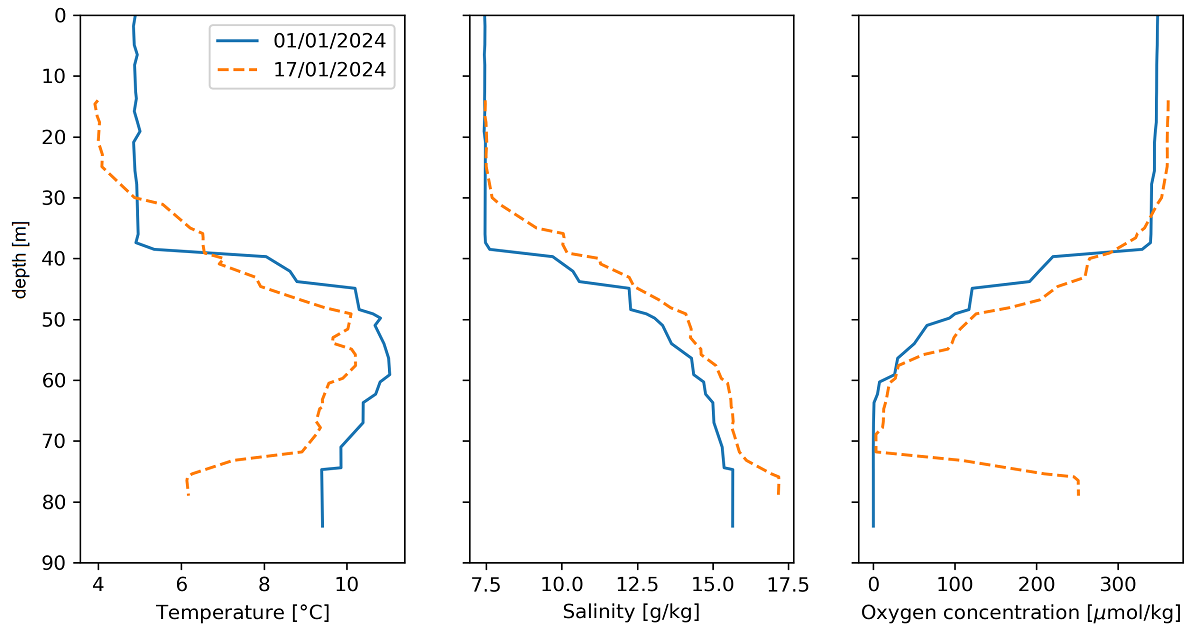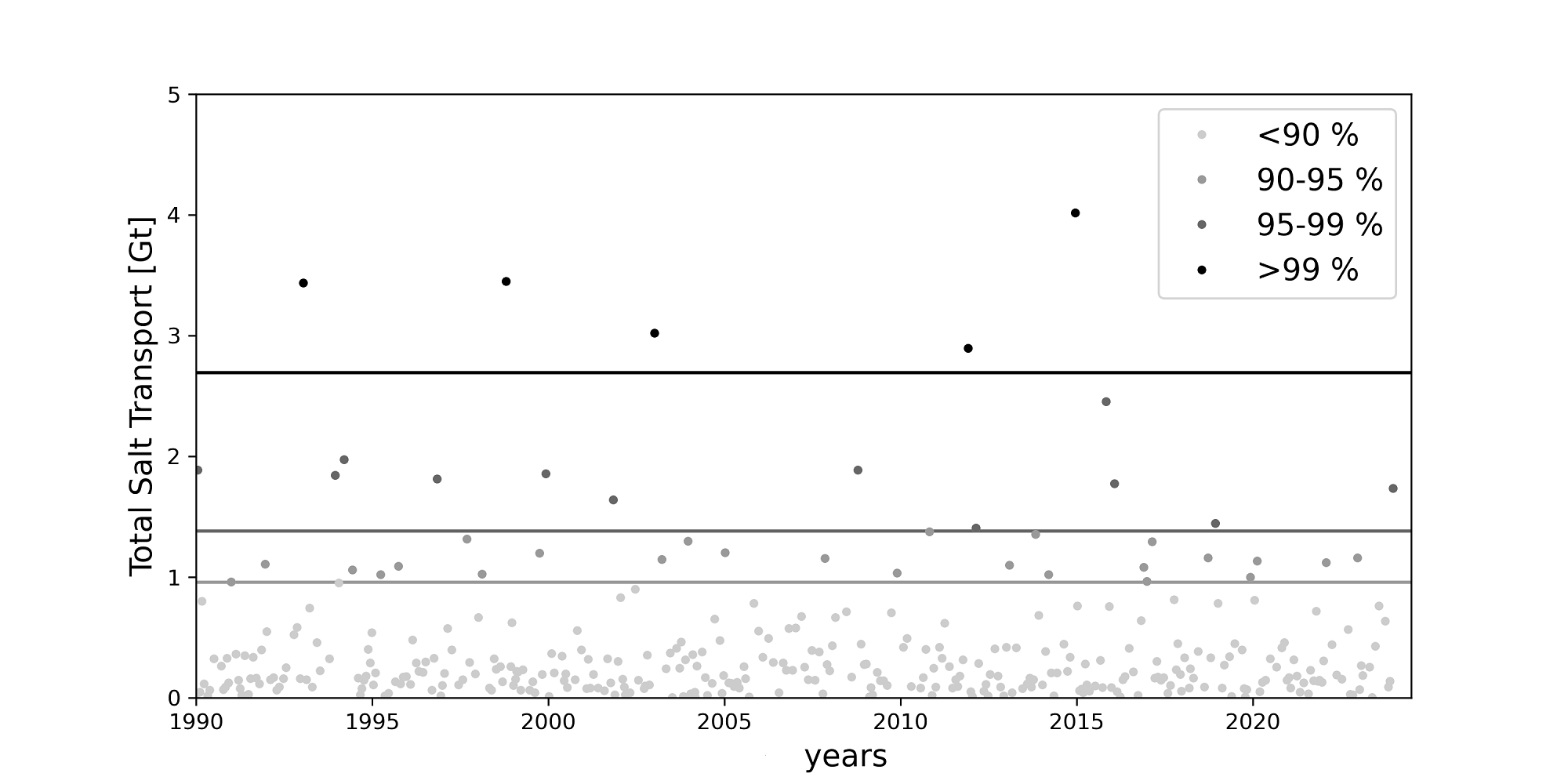Major Baltic Inflows
Baltic Sea inflow events bring a large amount of salty ocean water flowing through the Danish straits into the Baltic Sea. Such an inflow provides oxygen-rich water from the North Sea to the deep oxygen-poor parts of the Baltic Sea. This prevents the formation of hydrogen sulphide, which is harmful to biota. The large inflow event, also called a Major Baltic Inflow, entered the Baltic Sea in December 2014. Significant inflows also occurred in 2015, 2016 and 2023.
A large inflow event requires specific weather conditions that are rare. The water level of the Baltic Sea has to be clearly lower than the North Sea water level north of the Danish straits. So first the wind needs to blow for a long time from the eastern directions so that as much water as possible flows through the straits into the North Sea. After that, a western storm is urgently needed. When this happens, several tens or even hundreds of cubic kilometers of salty and oxygen-rich North Sea water will be pushed into the Baltic Sea in a few weeks.
When water from the North Sea pushes into the Baltic Sea, it proceeds along the bottom because it is denser than brackish water in the Baltic Sea. In this way, the Baltic Sea basins receive more oxygen, but at the edges of the basins, and especially in the Gulf of Finland, the oxygen content of the bottom decreases and the salinity stratification is strengthened as the saltwater pulse pushes the old, oxygen-poor and salty deep water of the Baltic Proper into it.

The stratification of the sea affects the oxygen concentration of the water near the bottom, because the strong halocline (a layer where salinity increases rapidly in depth towards the bottom) prevents oxygen-rich surface water from mixing with the water near the bottom. The depletion of oxygen and the formation of hydrogen sulfide is harmful to most of the organisms in the Baltic Sea, and most of the animals and plants on the bottom die and the fish disappear.
Recent inflow events
In the Baltic Sea, the extent of the oxygen-poor area varies according to the frequency of the Major Baltic Inflow events. So far, there have been only a few events in this millennium. The third largest Baltic Sea Inflow events since the beginning of the surveillance in the late 19th century took place in 2014. It was followed by medium size events in the next two years. However, the condition of the Baltic Sea basins had already become poor and these pulses improved the conditions for a short time only. The last major inflow event was of medium magnitude and arrived in December 2023. After that, in the southern parts of the Baltic Sea, the oxygen concentration of the water near the bottom increased, the water cooled, and salinity increased. However, no significant impact on the near-bottom layers was observed in the Baltic Proper.

18.7.2024
